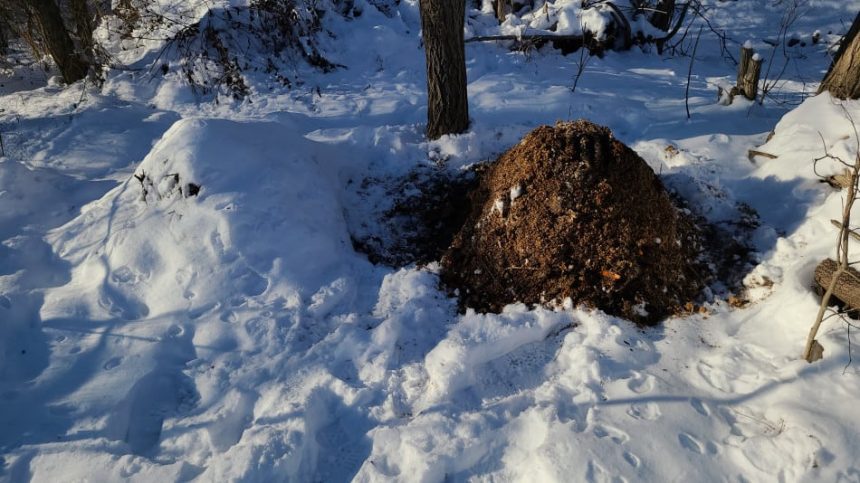Winter can be a challenging time for home composting. Cold temperatures slow down decomposition, piles can freeze over and critters may come looking to nest. However, with some preparation and adjustment of your composting methods, you can keep your compost active all winter long. Here is everything you need to know about successfully composting through the winter months.
Why Winter Composting Matters
- Continues recycling nutrients – Composting during winter allows you to continue recycling nutrients from your food scraps and yard debris rather than sending them to the landfill. This creates a free, natural fertilizer for spring.
- Reduces waste – Food scraps and yard waste make up 20-30% of what gets sent to landfills. Winter composting gives much of this material a second life in your garden.
- Saves space in landfills – With less decomposing activity happening outdoors, winter is when space in landfills gets taken up the fastest. Composting helps reduce your personal contribution.
- Builds soil for spring – Active winter composting means you’ll have finished compost ready to feed your soil as soon as spring planting season rolls around.
Getting Your Compost Pile Ready for Winter
Preparing your compost system for winter conditions is key to keeping decomposition running through the cold months. Here are some tips:
- Make sure your compost bin or pile is in a sunny spot. Sun exposure helps warm the center of the pile.
- Prevent standing moisture by ensuring your pile has a base layer of woody material or by elevating your bin off wet ground. Excess moisture will cause it to freeze.
- Build up an extra-large batch of compost leading up to winter. A larger pile holds heat better than a smaller pile.
- Add more brown materials like dried leaves, wood chips and straw. Browns provide insulation and air pockets for the winter months.
- Mix in some soil or finished compost, which contains heat-generating bacteria and fungi.
What to Compost in Winter
You can compost many of the same items during winter as other seasons, but a few adjustments will help keep your pile active when it’s cold out:
Greens
- Fruit and vegetable scraps
- Tea bags and coffee grounds
- Crushed eggshells
- Houseplant trimmings
- Shredded newspaper
- Livestock manure (rabbit, chicken, horse)
- Human hair and nail clippings
Browns
- Fallen leaves
- Woody yard debris
- Wood chips and shavings
- Straw
- Shredded cardboard
- Paper towels & napkins
- Sawdust from untreated wood
Don’t Include
- Invasive weeds (seeds may still be viable)
- Diseased plant material
- Meat, bones or fatty food scraps (can attract pests)
Maintaining Temperature & Moisture
The microbes that break down organic matter in compost thrive at temperatures between 90-140°F. In winter, you’ll need to be more hands-on with monitoring conditions inside your pile.
Temperature
- Check the internal temperature of your pile weekly with a compost thermometer.
- During freezing weather, the center should still read 100-110°F.
- If it falls below 100°F, your pile is too cold. Adjust by mixing in fresh greens and browns.
- A uniformly sized pile larger than 3’x3’x3′ holds heat best. Split into smaller piles if necessary.
Moisture
- Squeeze a handful of compost. It should feel damp, similar to a wrung-out sponge.
- If too dry, water piles before mixing in new scraps.
- Turning dry piles will also expose all areas to moisture and air.
- If heavy rain or snow soaks your compost, cover piles with a tarp until they re-warm.
Troubleshooting Problems
Even with excellent preparation, compost can run into issues over winter. Here are some common problems and ways to get your pile back on track:
Pile Freezing Through
- Mix in fresh greens and browns to insulate and generate heat.
- Use a pitchfork to turn and fluff up compacted sections.
- Cover the pile with a tarp, burlap sacks or extra browns to hold in heat.
Slow Decomposition
- Check temperature and moisture levels. Adjust as needed.
- Reduce pile size if it’s larger than 5’x5’x5′. This will help retain heat for decomposition.
- Be patient! Piles process more slowly in winter but decomposition will continue.
Pests Nesting
- Eliminate meat and fatty food wastes that can attract pests.
- Use hardware cloth underneath piles to block digging animals.
- Turn piles frequently to disrupt nests squirrels or skunks start to build inside.
Composting in Winter Without a Pile
Don’t let frosty temperatures deter you from composting altogether if you can’t actively maintain a traditional pile. Here are other easy composting methods for winter:
Vermicomposting
- Composting with red wiggler worms can be done indoors year-round. Worm bins provide constant soil amendments for potted plants.
Bokashi
- This anaerobic method ferments food scraps to preserve nutrients before burying in soil. Bokashi buckets work in any climate.
Sheet Mulching
- Layer greens, browns, compost and soil directly onto your garden beds before winter. They’ll transform into rich soil by spring planting time!
Slow Composting
- Toss scraps straight into your garden beds or bury them under mulch. Let nature passively break them down through the winter.
Using Finished Winter Compost
After months of cold-weather composting, you’ll have “black gold” ready to feed your garden beds! Here are some ways to make the most of finished winter compost:
- Mix 1-3 inches into soil when preparing spring garden beds or before laying sod. It will provide nutrients for the entire growing season.
- Top-dress lawns by scattering a thin layer over grass in early spring and fall. The compost will slowly filter down to the soil underneath.
- Make homemade seed starter mix using 1 part compost to 2 parts coir or peat. This combo offers moisture retention and healthy nutrients for sprouting seeds!
- Mix 20-30% compost into potting soil blends for container gardening. The finished compost supplies a slow-release nutrient source.
- Brew compost tea to make a concentrated liquid fertilizer. Add a shovelful of compost to a burlap sack and soak in a bucket of water for a few days to weeks.
Conclusion
From prepping piles in fall to troubleshooting winter problems, actively composting through the cold season takes some extra planning and maintenance. But keeping your organic waste out of the landfill provides rich rewards come springtime. The finished compost you’ll harvest after months of winter composting makes an incredible fertilizer to start your garden off strong next growing season!
FAQs
If your entire compost pile freezes through, the decomposition process will halt. You’ll need to mix in fresh greens and browns to insulate the pile and restart heat generation. Breaking up compressed sections with a pitchfork can also help get air circulating again.
Yes. A few inches of ice or snow acts as an insulating layer to protect the active compost underneath. Try to leave it undisturbed. The decomposition happening in the core of the pile will slowly melt the frozen layer once temperatures warm again. Just keep adding new materials to the top.
While open piles work in other seasons, contained bins help retain heat better in winter. Bin designs with double walls and insulating dead air space (like plastic compost units) provide excellent insulation for winter.
Don’t hold back food scraps just because piles freeze! Toss them in anyway. Once your compost thaws in spring, the fresh materials will decompose. Just try to bury them under insulating layers of browns when adding to frozen piles.
Turning is still important for aeration, even with snow cover. The dark center of your pile should absorb enough sunlight through light snow to keep some heat going. Just brush off excess snow before turning contents back into the bin or pile.
In ideal hot composting conditions, piles process in 4-6 weeks. But cold winter piles take 2-3 times longer. Be patient and focus on maintaining internal temperature. Finished winter compost can take 4 months or longer before it’s cured and ready to use.




